The ASRock DeskMini 310 Mini-PC Review: A Cost-Effective Mini-STX Platform
by Ganesh T S on March 15, 2019 9:30 AM EST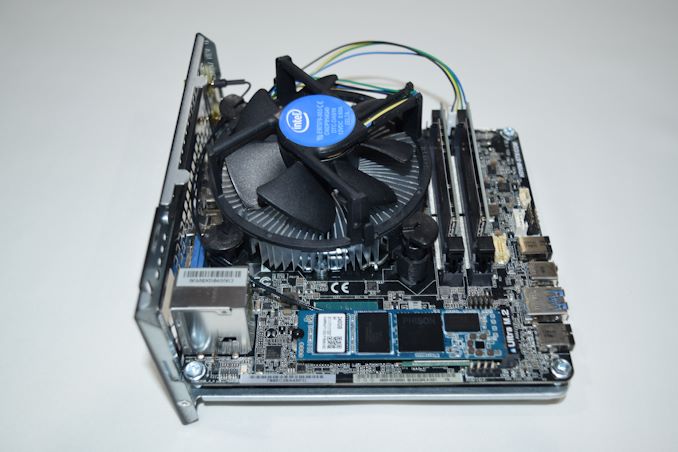
Small form-factor PCs and gaming systems have emerged as bright spots in the mature PC market over the last decade or so. Intel's NUC form-factor introduction was the turning point in the SFF segment, though it came with a few limitations for DIY enthusiasts. While mini-ITX systems are quite flexible and compact, Intel realized that the market could do with an option between the NUC and the mini-ITX systems. The mini-STX (5-inch by 5-inch, known as '5x5') form-factor was launched in 2015. ASRock and ECS have introduced a number of mini-STX form-factor boards and systems. Today, we are taking a look at a low-cost H310 chipset-based mini-STX system from ASRock: the DeskMini 310.
The ASRock DeskMini 310: Barebones Going Small
ASRock was one of the pioneers in the SFF PC space with their Core and Vision series of products using customized boards. After Intel's NUC and mini-STX became popular, the company introduced the Beebox (NUC clone) and the DeskMini (mini-STX and micro-STX) series into the market. The DeskMini units are sold as barebone packages, coming with the chassis, motherboard, power supply, Wi-Fi module, and assorted cables. Users need to supply a CPU, a CPU cooler, DRAM, and storage.
We have reviewed the DeskMini 110 mini-STX barebones PC back in mid-2016, and the DeskMini Z370 micro-STX PC (with a GTX 1060 discrete GPU in a MXM card) in mid-2018. The DeskMini 310 that we are looking at today is a follow-up product to the DeskMini 110. While the DeskMini 110 was based on the Intel H110 chipset and supported the LGA 1151 Skylake processors, the DeskMini 310 is based on the Intel H310 chipset and supports the 8th Generation and 9th Generation Intel processors. Similar to the DeskMini 110, the 310 also supports the stock Intel cooler and can accommodate processors with TDP of up to 65W.
The DeskMini 310 comes with the motherboard pre-installed in the chassis. Users need to supply their own CPU, DDR4 SODIMMs, and M.2 PCIe SSD and/or 2.5" drives. Installing them involves the removal of four screws and pulling out of the motherboard tray. The M.2 Wi-Fi module comes in a separate package (as shown in the above picture) and is not pre-installed. The other cables (such as the dual USB 2.0 port cable for connecting to the motherboard's USB 2.0 header, the serial port cable, and the SATA connectors) also need to be user-installed. The package also comes with a 120W (19V @ 6.32A) power adapter
The chassis of the DeskMini 310 is barely different from that of the DeskMini 110. The only update is the presence of two USB 2.0 ports on the left side panel (assuming the system is oriented vertically) - we saw this in the DeskMini Z370, and we are glad that the feature also makes it to the DeskMini 310. The location of these two USB 2.0 ports makes them perfect for plugging in the receivers for wireless keyboards and mice.
Moving on to the features of the motherboard itself, we find the DeskMini 310 enabling the M.2 SSD slot with four PCIe 3.0 lanes directly from the CPU. The PCIe lanes off the H310 chipset are used by the Wi-Fi module. The main difference compared to the DeskMini 110 board is the presence of a micro-SD slot. Other features (such as the ability to accommodate two 2.5" drives) are carried over from the DeskMini 110.
ASRock sampled us a barebones unit of the DeskMini 310. In order to complete the build, Intel helped us out with a Core i3-8100 (the budget H310-chipset is usually paired with one of the compatible low-end Core-series or Pentium/Celeron processors). We used a 240GB Phison PS5007 reference design with MLC flash for the NVMe drive (roughly equivalent to the Corsair FORCE MP500 or the Kingston KC1000) and Team Group's Vulcan DDR4 SODIMMs rated for 2400 MHz operation.
The specifications of our ASRock DeskMini 310 review configuration are summarized in the table below.
| ASRock DeskMini 310 Specifications | |
| Processor | Intel Core i3-8100 8th Gen. (Coffee Lake), 4C/4T, 3.6 GHz, 14nm++, 6MB, 65W TDP |
| Memory | Team Group TEAMGROUP-SD4-2400 DDR4 SODIMM 16-16-16-39 @ 2400 MHz 2x8 GB |
| Graphics | Intel UHD Graphics 630 |
| Disk Drive(s) | TEKQ PSE7 NVMe (comparable to Corsair FORCE MP500) (240 GB; M.2 2280 PCIe 3.0 x4; Toshiba 15nm MLC) |
| Networking | Intel Dual Band Wireless-AC 3168 (1x1 802.11ac - 433 Mbps) -Intel I219V Gigabit Ethernet Controller |
| Audio | 3.5mm Headphone Jack Capable of 5.1/7.1 digital output with HD audio bitstreaming (HDMI) |
| Miscellaneous I/O Ports | 3x USB 2.0 2x USB 3.0 Type-A, 1x USB 3.1 Gen 1 Type-C 1x micro-SDXC |
| Operating System | Retail unit is barebones, but we installed Windows 10 Enterprise x64 |
| Pricing (As configured) | $162 (barebones) $523 (as configured, No OS) |
| Full Specifications | ASRock DeskMini 310 Specifications |
In the table below, we have an overview of the various systems that we are comparing the ASRock DeskMini 310 against. Note that they may not belong to the same market segment. The relevant configuration details of the machines are provided so that readers have an understanding of why some benchmark numbers are skewed for or against the ASRock DeskMini 310 when we come to those sections.
| Comparative PC Configurations | ||
| Aspect | ASRock DeskMini 310 | |
| CPU | Intel Core i3-8100 | Intel Core i3-8100 |
| GPU | Intel UHD Graphics 630 | Intel UHD Graphics 630 |
| RAM | Team Group TEAMGROUP-SD4-2400 DDR4 SODIMM 16-16-16-39 @ 2400 MHz 2x8 GB |
Team Group TEAMGROUP-SD4-2400 DDR4 SODIMM 16-16-16-39 @ 2400 MHz 2x8 GB |
| Storage | TEKQ PSE7 NVMe (comparable to Corsair FORCE MP500) (240 GB; M.2 2280 PCIe 3.0 x4; Toshiba 15nm MLC) |
TEKQ PSE7 NVMe (comparable to Corsair FORCE MP500) (240 GB; M.2 2280 PCIe 3.0 x4; Toshiba 15nm MLC) |
| Wi-Fi | Intel Dual Band Wireless-AC 3168 (1x1 802.11ac - 433 Mbps) |
Intel Dual Band Wireless-AC 3168 (1x1 802.11ac - 433 Mbps) |
| Price (in USD, when built) | $162 (barebones) $523 (as configured, No OS) |
$162 (barebones) $523 (as configured, No OS) |


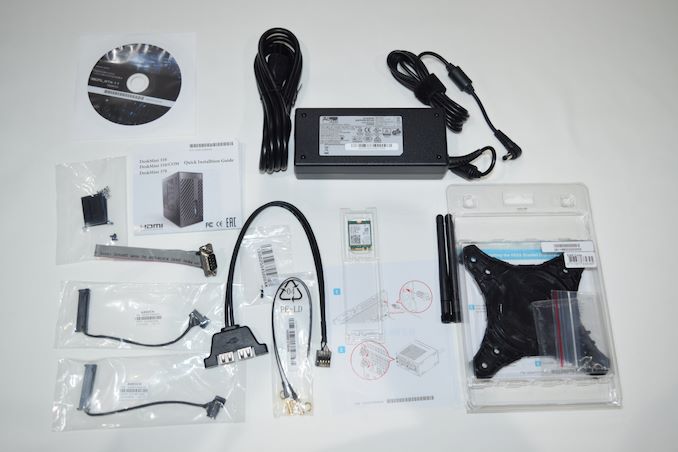
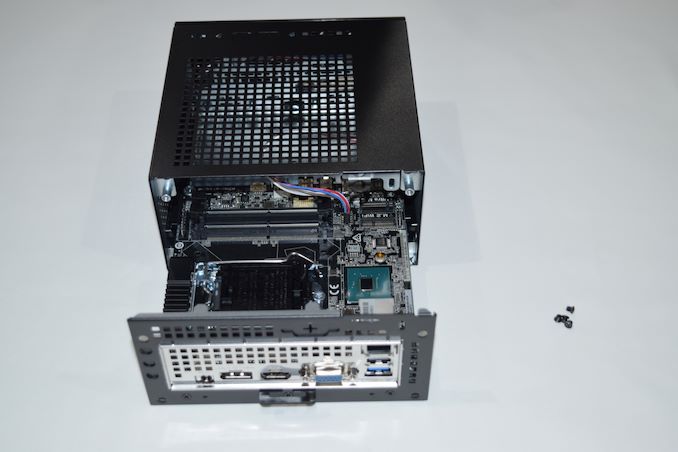
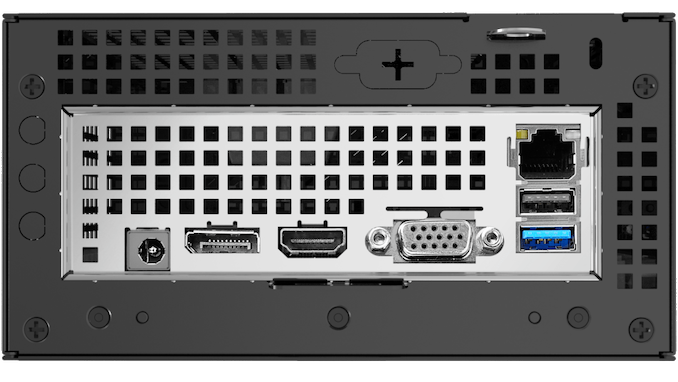
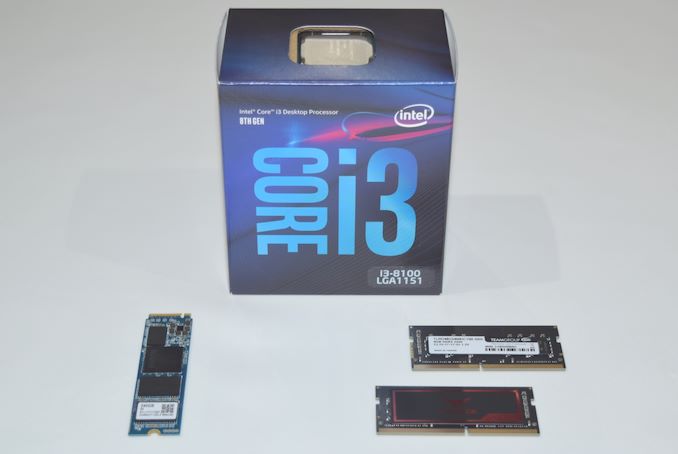









48 Comments
View All Comments
skpetic - Saturday, March 16, 2019 - link
Can you please review the possibilities for passively cooling the CPU in this case? I feel this is a device that could really be a hit in the low noise HTPC market. Interested in Arctic Alpine AM4 Passive cooler and the like.AdditionalPylons - Saturday, March 16, 2019 - link
The Arctic Alpine AM4 heatsink won't fit in the A300 case. Max supported CPU cooler height is 46 mm, while the Alpine is 70 mm. That said you can of course run with the case open but that's not an option for most people. Possibly move the motherboard to another case?SaturnusDK - Saturday, March 16, 2019 - link
The stealth cooler that comes with a 2200/2400G does fit though.skpetic - Sunday, March 17, 2019 - link
Do you know if the 2400G will throttle badly if you disable the fan on that / can the chip be under volted to remedy it somewhat?guidryp - Tuesday, March 19, 2019 - link
Just dremel the case and let the Arctic Alpine fins stick out.vithrell - Monday, March 18, 2019 - link
Could you review 2400GE/2200GE at the same time, those are very interesting SKU, but solid reviews are nowhere to be found, especially with power consumption numbers.IGTrading - Friday, March 15, 2019 - link
Is there an AMD Ryzen based version ?I'll wait for that.
toliman - Friday, March 15, 2019 - link
Check youtube for at least 2 reviews of the deskmini A300, with a Ryzen 2400G. They really should have focused on the A300 review as intel NUC hardware has been around for years & other options are available. Price is usd $149 on neweggdeil - Friday, March 15, 2019 - link
I want one. Only reason I checked this article.....m.2 drive, amd apu, 3200 ram, vesa mount. mini-gaming-god.
Ashinjuka - Friday, March 15, 2019 - link
I find the AMD-oriented DeskMini A300 Series much more interesting in this little sub-segment. I'm tempted to grab one to play with but I'll probably just wait until summer and the Ryzen 3000's and do a full build.